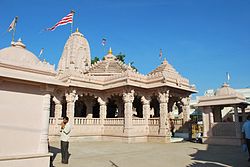
Kutch district, officially spelled Kachchh, is a district of Gujarat state in western India, with its headquarters (capital) at Bhuj. Covering an area of 45,674 km2, it is the largest district of India. The area of Kutch is larger than the entire area of other Indian states like Haryana (44,212 km2) and Kerala (38,863 km2). The population of Kutch is about 2,092,371. It has 10 talukas, 939 villages and 6 municipalities. The Kutch district is home to the Kutchi people who speak the Kutchi language.

Bhuj is a city and the headquarters of Kutch district in the Indian state of Gujarat.

Anjar is a town, township and municipality of the Kachchh district (Kutch)in the state of Gujarat, India. Founded in 650 AD, Anjar is a culturally diverse town of historic importance in the region. It is home to several historic religious temples, including the Jesal-Toral Shrines built in honour of a fourteenth century couple, whose lives inspired works of art and cinema. The town was devastated by several earthquakes, including the 1819 Rann of Kutch earthquake and 2001 Gujarat earthquake. In recent years, Anjar has become a hub of manufacturing activity.
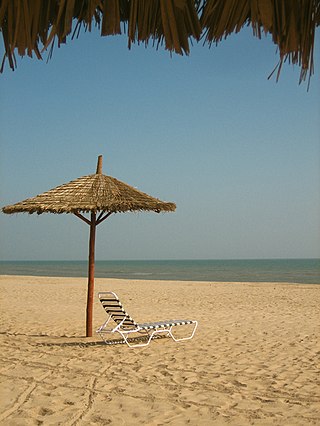
Mandvi is a beach town with municipality in the Kachchh district (Kutch) in the Indian state of Gujarat. It was once a major port of the region and summer retreat for Maharao (king) of the Cutch State. The old city was enclosed in the fort wall and remains of the fort wall can still be seen. The city has a four-hundred-year-old ship building industry which is still functional and dhows, a type of wooden ship, are still made. Mandvi Municipality's 36 Seat Of 9 Ward.
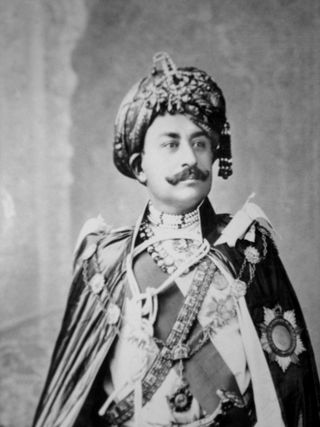
Maharajadhiraj Mirza Maharao Sir Khengarji III Sawai Bahadur was a progressive and one of the longest ruling monarchs and also the longest ruling king of the Princely State of Kutch from 1875 to 1942.
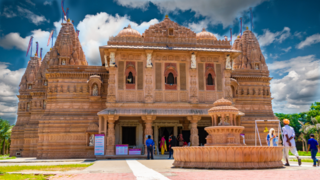
Bhadresar or Bhadreshwar is a village in Mundra Taluka, Kutch district of Gujarat, India. It is about 27 km from Taluka headquarters Mundra and barely a kilometer away from the seashore.

Koteshwar is a small village and the location of an ancient Shiva temple. It located near the mouth of Kori Creek, in the west of Kutch district of Gujarat, India.

Narayan Sarovar or Narayansar is a village and place of pilgrimage for Hindus on the Kori Creek. It is located in Lakhpat taluka of Kutch district in the Indian state of Gujarat. The ancient Koteshwar temple lies 4 km away, towards the north-west. The temple is classified among the 108 Abhimana Kshethram of Vaishnavate tradition.
Tera is a historic village in the Kutch District of the Indian state of Gujarat. It is in Abdasa Taluka, located 13 kilometres (8.1 mi) from the taluka headquarters, Naliya, and 84 kilometres (52 mi) from the district headquarters, Bhuj.
Kapadi, also known as Kapdi is a small community in Gujarat.
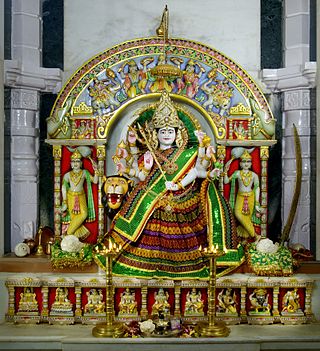
Ashapura Mata is an aspect of Devi, a Hindu goddess. She is one of the kuladevis of Kutch and Rajasthan, and the Jadeja clan of gujarat and Chauhans inhabiting the western indian provinces. She is a goddess regarded to fulfill the wishes of her adherents. In her iconography,

Kutch, also spelled Kutch or Kachchh and also historically known as the Kingdom of Kutch, was a kingdom in the Kutch region from 1147 to 1819 and a princely state under British rule from 1819 to 1947. Its territories covered the present day Kutch region of Gujarat north of the Gulf of Kutch. Bordered by Sindh in the north, Cutch State was one of the few princely states with a coastline.
Khengarji I (1510-1585) was an Indian ruler belonging to Jadeja clan of Rajputs. He was the ruler of Morbi from 1538-1585 and later became ruler of Cutch, assuming title of Rao of Cutch, ruling unified Cutch from 1548 to 1585.
Gedi is a village near Rapar of Kutch district of Gujarat, India.

Kera is a village in Bhuj Taluka of Kutch district of Gujarat, India.this historical town was ruled by the jadeja's before independence in 1947. This historical town has several places of interest; the most important part of the town's history the Darbar gadh, the ruins of an old fort and Shiva temple, and the shrine of a Muslim saint Ghulam Ali.

Jakh Botera, Jakhdada, Jakkha Bautera, 72 Yaksha or Bohter Yaksha, literally seventy-two Yaksha warriors, are group of folk deities worshiped widely in Kutch district of Gujarat, India.
Rav is a village of three hamlets; Rav Moti, Rav Nani and Temple; in an open plain, located nineteen miles from Chobari, in Rapar Taluka of Kutch district of Gujarat, India.
Rao Godji II, was the Rao of Cutch belonging to Jadeja Rajput dynasty, who ascended the throne of Princely State of Cutch in 1760 and ruled until 1778 when he died. During his rein, the state was invaded by Kalhoras and Talpuras of Sindh several times.

The Shiva temple, Kera, also known as Lakheshwara temple of Kerakot, is located in Kera village near Bhuj of Kutch district in Gujarat, India. The temple was built during the reign of the Chaulukya dynasty (Solankis) in the later part of the 10th Century and is dedicated to Shiva. The temple has been subjected to severe earthquake damage during the earthquake of 1819 and the Bhuj earthquake of 2001. But the temple's spire, inner sanctum and the sculptures are still in an attractive condition.

The Shantinath Jain temple is located in Kothara of Kutch district, Gujarat, India. The temple is dedicated to Shantinatha and is an important place of pilgrimage for the followers of Jainism.
